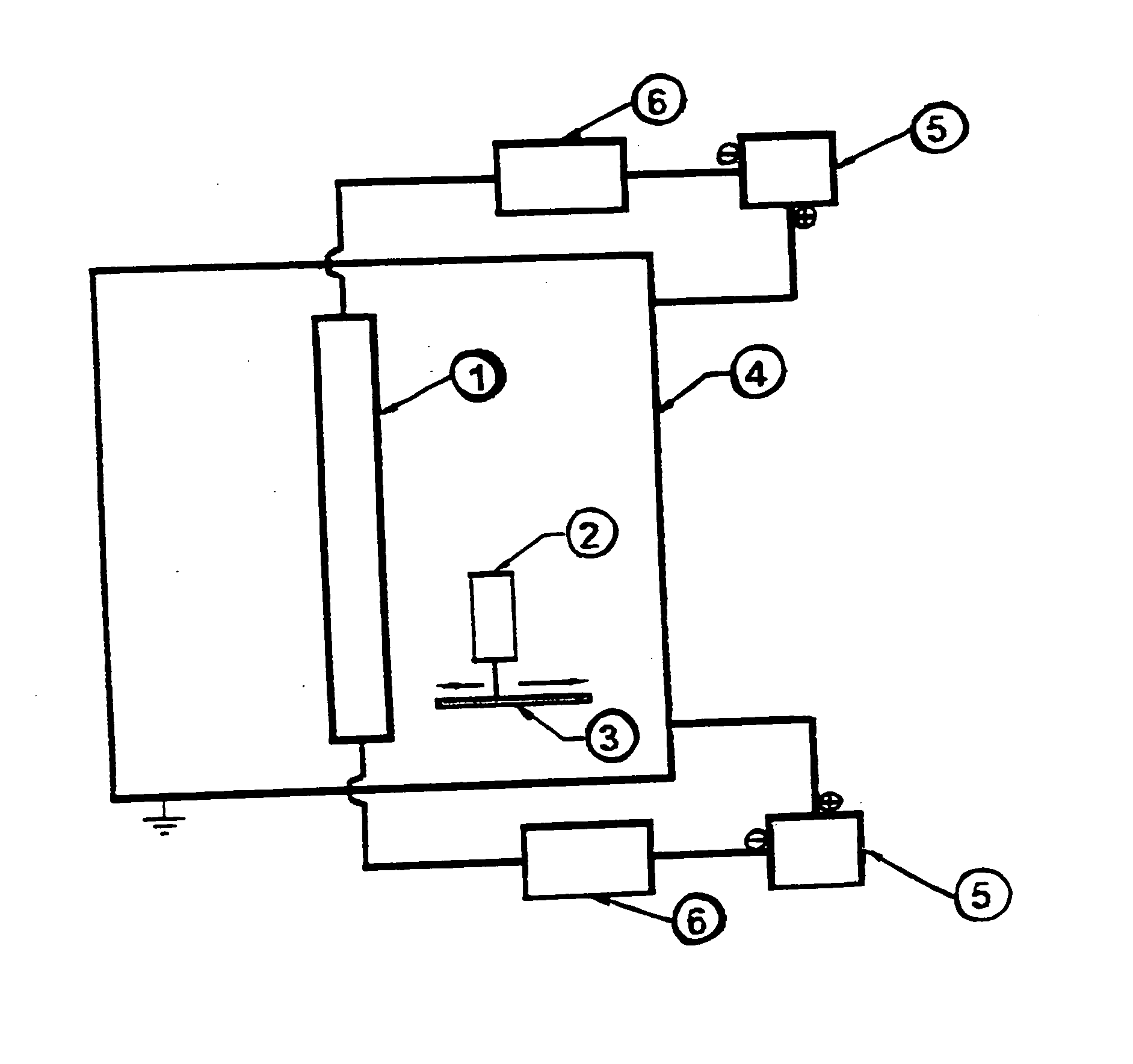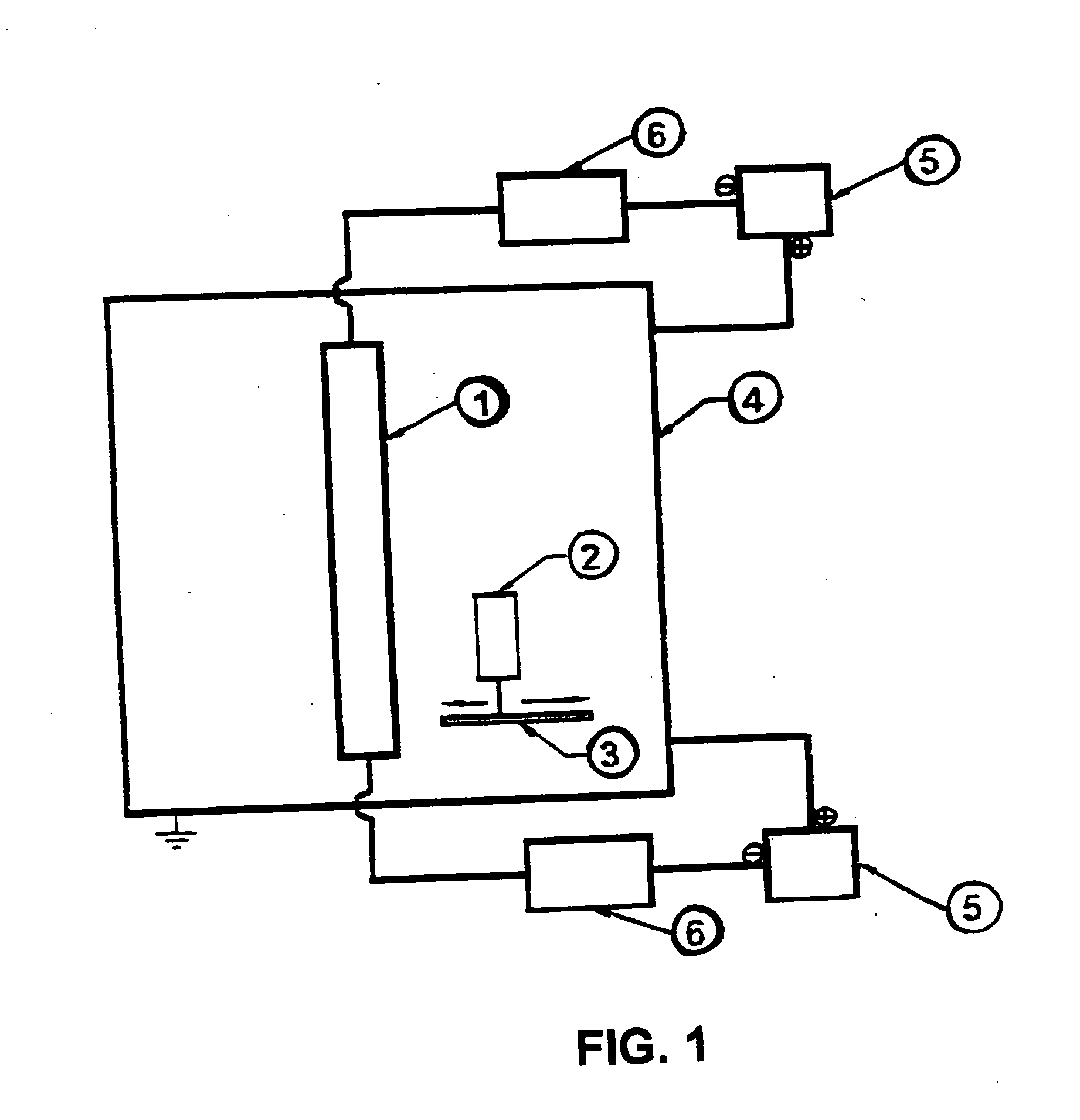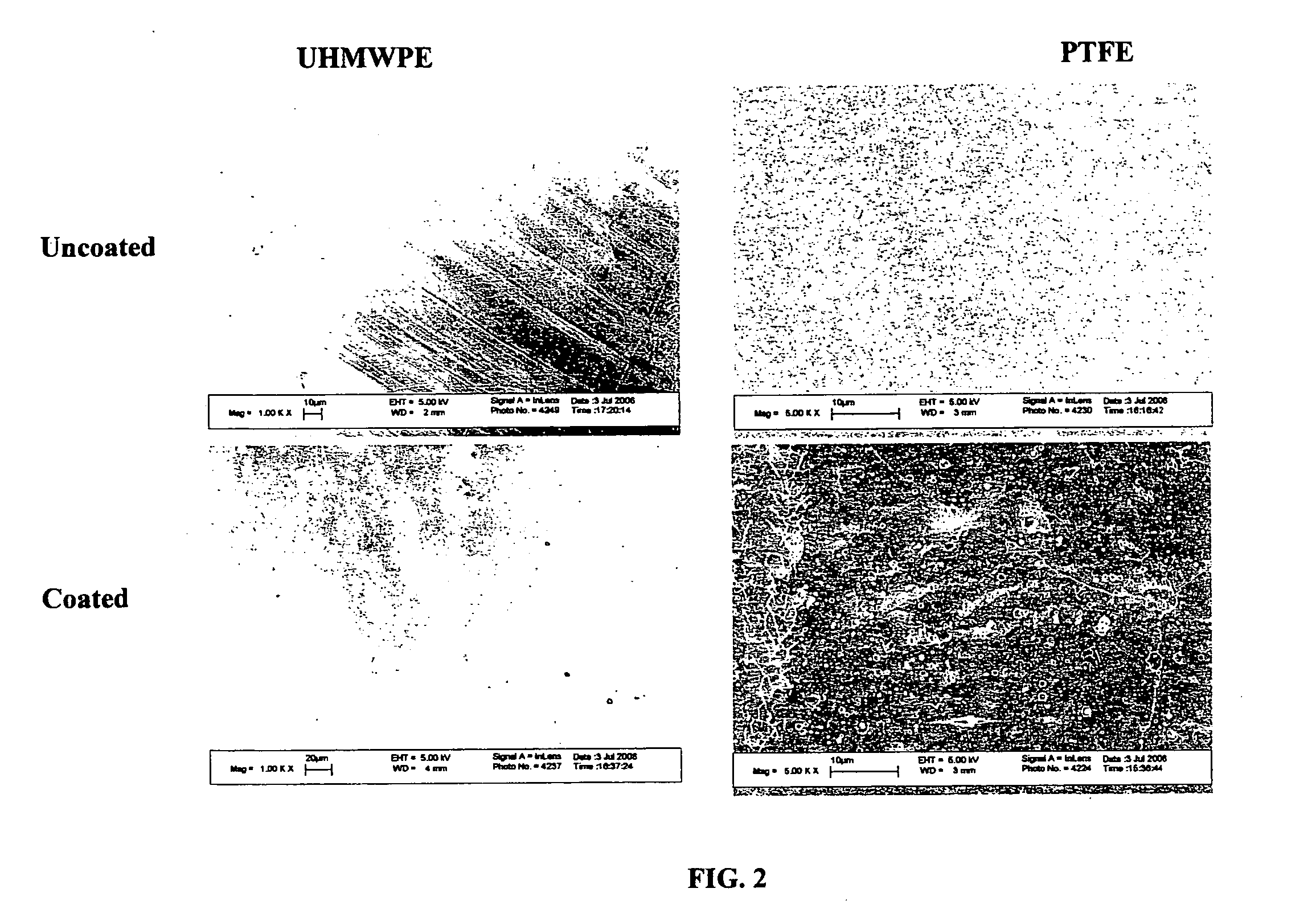Modified surfaces for attachment of biological materials
a technology of biological materials and modified surfaces, applied in the field of modified coatings, can solve problems such as delay or inhibit recovery, and achieve the effect of enhancing tissue attachmen
- Summary
- Abstract
- Description
- Claims
- Application Information
AI Technical Summary
Benefits of technology
Problems solved by technology
Method used
Image
Examples
example 1
Controlled IPD Deposited Metal Films
[0102]FIG. 1 illustrates an apparatus suitable for controlling deposition of the plasma ejected from the cathodic arc target source (1) onto a selected substrate (2). The size of the particle deposited, and thus the degree of nanotexturing of the deposited surface is controlled by a movable substrate holder (3) within the vacuum chamber (4) or by a power supply (5) to the target and adjustment of arc speed (6). The closer a substrate is to the arc source, the larger and more densely packed will be the particles deposited on the substrate.
[0103] To prepare the coated substrates used for cell adhesion, a fairly macro-free film was deposited by positioning a substrate at a relatively far distance from the target. This formed an adhesive film. A more macro dense film was then deposited by positioning the substrate closer to the target.
Control of Substrate Distance from Target
[0104] Referring to FIG. 1, a substrate (sample 1) was placed in the mova...
example 2
IPD Deposited Coatings
[0112] The vacuum chamber 4, see FIG. 1, was pumped to a suitable working pressure, typically in the range of 0.1 mT to 30 mT; however, the ability of the IPD process to produce effective attachment surfaces having sustained release rates is not dependent on any specific working pressure within the range of 0.1 mT to 30 mT. Similarly, the IPD process is not dependent upon operating temperature. Typical operating temperatures are in the range of 25° C. to 200° C., but lower or higher temperatures may also be used. The temperature employed is in part be determined by the substrate. Temperatures within a range between about 20° to about 40° C. are suitable for producing most attachment surfaces.
[0113] The substrate can be rotated using, for example, a turntable, or rolled past the deposition area in any orientation relative to the trajectory of the incoming deposition material. Power is supplied to the target to generate an electric arc at the target. The power ...
example 3
Osteoblast Adhesion on Coated Polymer Substrates
[0122] Titanium and gold coated polymer substrates were prepared. The substrates were PEEK, UHMWPE and PTFE, each coated with gold, titanium or uncoated.
[0123] All substrates were placed in 12-well tissue culture plates (Corning, N.Y.) and were rinsed with sterilized phosphate buffered saline (PBS), 1× strength, containing 8 g NaCl, 0.2 g KCl, 1.2 g. Na2HPO4 and 0.2 g KH2PO4 in 1000 ml deionized water adjusted to pH of 7.4 (all chemicals from Sigma). Osteoblasts were then seeded at a concentration of 2500 cell / cm2 onto the compacts of interest in 2 ml of DMEM (Hyclone) supplemented with 10% FBS (Hyclone) and 1% P / S and were then incubated under standard cell culture conditions at 37° C., 5% CO2 and 95% humidified air. After 4 hr, cell culture medium was aspirated from the wells and the substrates rinsed with PBS three times to remove non-adherent cells. Adherent cells were fixed with 4% formaldehyde (Fisher Scientific, Pittsburgh, Pa...
PUM
| Property | Measurement | Unit |
|---|---|---|
| Thickness | aaaaa | aaaaa |
| Thickness | aaaaa | aaaaa |
| Thickness | aaaaa | aaaaa |
Abstract
Description
Claims
Application Information
 Login to View More
Login to View More - R&D
- Intellectual Property
- Life Sciences
- Materials
- Tech Scout
- Unparalleled Data Quality
- Higher Quality Content
- 60% Fewer Hallucinations
Browse by: Latest US Patents, China's latest patents, Technical Efficacy Thesaurus, Application Domain, Technology Topic, Popular Technical Reports.
© 2025 PatSnap. All rights reserved.Legal|Privacy policy|Modern Slavery Act Transparency Statement|Sitemap|About US| Contact US: help@patsnap.com



